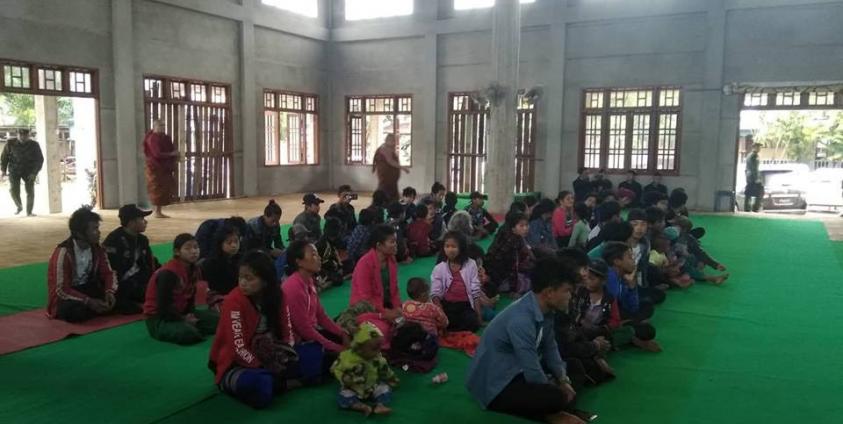A villager describes being caught in the tension between armed groups in southern Shan State, and seeking refuge elsewhere before fighting reignites.
As military tension builds in southern Shan State’s Mongpan Township due to the presence of the Burma Army, and more recently, due to conflict between the Restoration Council of Shan State (RCSS) and the Pa-O National Liberation Organization (PNLO), locals have fled to Langkhur Township and to Wa-controlled territory across the Salween River.
Although there are currently no clashes in the area, residents have cited fears of future fighting, as well as stability for their children, particularly in the pursuit of their education, as the primary reasons for leaving their homes.
SHAN spoke to an internally displaced villager from the Mongpan community of Nawng Cho who gave a firsthand account the current situation. Their name has been withheld for their own security. They are now among the approximately 80 people taking refuge in Langkhur.
“The government staff, such as health workers and school teachers, have already left the village. The villagers are afraid to live in their own village—they think it’s better to leave this area. In the past, villagers fled to a nearby town if military tension was on the rise, then returned to their village once the situation had gotten better. They couldn’t tend to their farms because they were often running away from their homes.
We could not stop the Burma Army. They also opened fire using heavy weapons. After the teachers and health workers left the village, villagers were afraid to continue living in their own village. Some fled to Thailand but some fled to the ethnic Wa region.
Clashes were not so big but they have been going on for so long. There are landmines around the village. Some villagers accidentally stepped on them. Government forces issued a ‘do not go out at night’ order in the area. They didn’t allow villagers to turn on oil lamps. If villagers used flashlights at night, soldiers shot at the house. Government forces shelled once into the village at night, it was luckily no one was hurt. The shell landed in a cow farm but there were no cows there at that time. If there had been cows in the farm, they would have been killed.
Pa-O forces didn’t come into our area in the past. Recently, Pa-O forces have built more posts in the area. In the past, there was only one PNLO camp in the area. Shan soldiers use to travel on this road. Once, Shan and Pa-O forces shot at each other on the road for the whole day.
This is why my children and I left our village. Some villagers wanted to go with us but they didn’t. Some villagers will continue to stay in the village. Some villagers followed us later. I didn’t see anybody along the road when I came to here [to Langkhur]. Nobody stopped me. There are many people remaining in Kon Maikpok and Maik Nin villages. Some villagers have been hiding in the jungle. I don’t know what will happen in the area. I already sent my children to volunteer schools for their education.
We were not forced to leave our village by either Pa-O or Shan forces. Villagers left on their own because of fear. Both Shan and Pa-O ethnic people have been living together in Nawng Cho village like brothers and sisters. There has been no discrimination among us. Villagers had to help soldiers from any armed group—PNLO, RCSS, or the Tatmadaw—who came to our village.”







